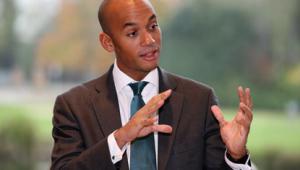Speaking at the Local Government Association’s annual local government finance conference on 6 January, Stuart Hoggan, deputy director of local government finance reform and settlement at DCLG, called on the sector to help with the development the new system.
He said the move to full local retention of business rates by 2020 would see both grant from Whitehall end and additional responsibilities passed to town halls to make the switch fiscally neutral. The amount of revenue support grant for 2016/17 is set to be nearly £7.2bn, while total business rate revenue is around £26bn.
Hoggan said a new way to assess need would be developed as part of the redistribution system for retention. This would account for the fact that “the instance of business rates is different from the instance of need to spend”.
He acknowledged that this would be “quite controversial”.
“We need to work out a way of measuring relative needs and resources,” he told delegates.
“There’s a future proofing issue there – we will have a position at day one in the system, but when do we return to reset the needs baseline, and how responsive is that over time?
“The other side of the coin to being responsive to changes in need is the continuing incentive that you see from business rates growth, so there’s a balance between needs and incentive there that needs to be struck.”
He said that DCLG was at the start of this process and doesn’t have “a closed mind on how this will work at all”.
“If anyone has done any thinking and would like to send it in – we will be putting out feelers for those who have expertise and time available to commit to what is quite a significant project to join us and work on that,” he added.
This new needs assessment will be the first undertaken since the baseline was set for the current system of local retention of half of business rate growth from April 2013.
This established a system of top ups and tariffs based on council’s formula grant allocations and was intended to ensure a fair starting point for all authorities, and would be reviewed and reset at regular intervals.
Hoggan said the way resets would work in a fully localised system, and for how long the starting point from 2020 would remain in place, was also an “open issue”.
“The current system works by assuming there’s an allocation based on need which remains in place for a period, from 2013-2020 under current assumptions, and at that point the position on need will have changed sufficiently to require reset.”
He said that it was not yet possible to guarantee that full-scale resets would take place under the new scheme.
“The commitment is to 100% retention to the sector as a whole, but it’s not out of the question that it would be the right thing to do a re-allocation periodically. But there may be other ways of doing this that don’t require these big resets, and that’s the thinking we want to do with you.”




















